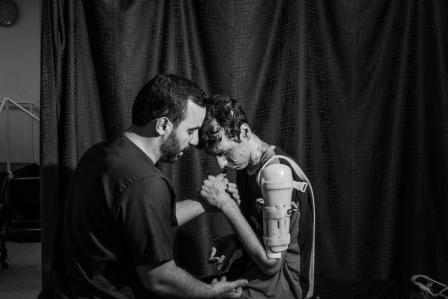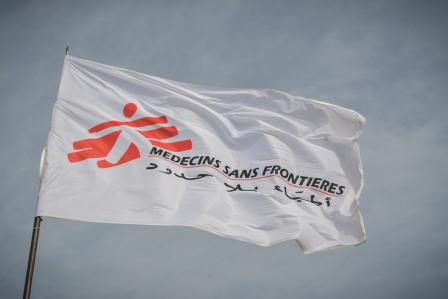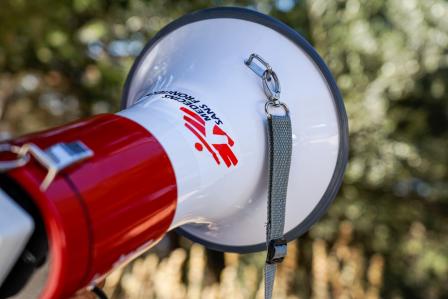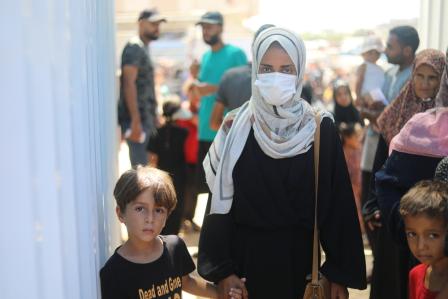Gaza strip: Nasser hospital must be protected as the last main hospitals struggle amid deadly July
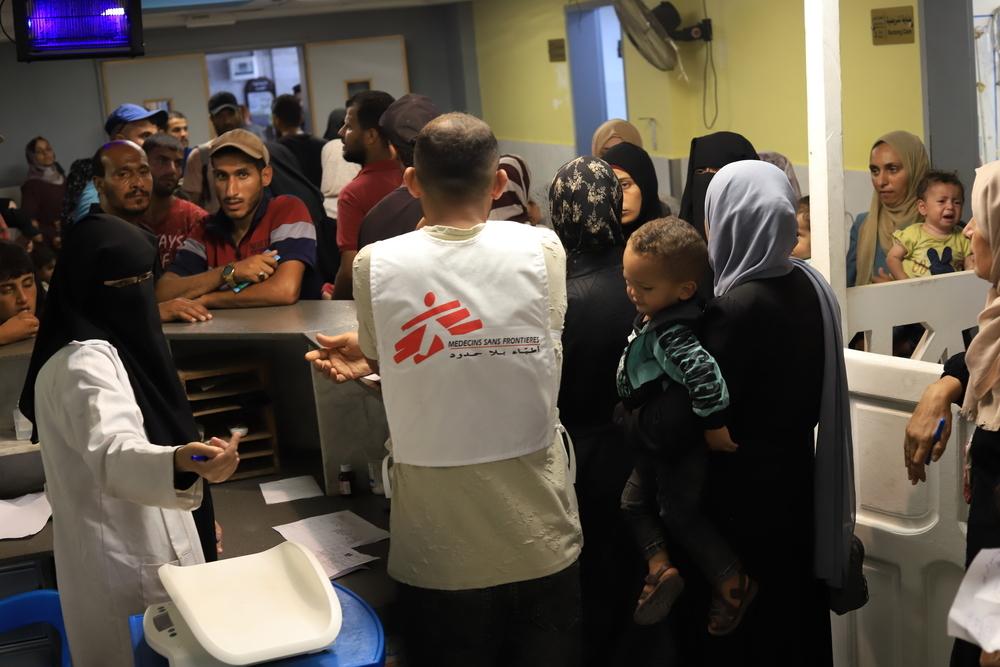
Nasser Hospital maternity department is providing some 25-30 safe deliveries a day. This is more than before the pre-war, as it is now one of the few operational maternity facilities in southern Gaza. Palestinian Territories, June 2024. © Mariam Abu Dagga/MSF
Jerusalem – In Khan Younis, southern Gaza, fighting is approaching ever closer to Nasser hospital, putting it under threat and jeopardising people’s access to medical care. This comes as Doctors Without Borders / Médecins Sans Frontières (MSF) teams at Nasser and Al-Aqsa hospitals have responded to 10 mass influxes of badly injured people in July alone, following bombings in the area. Doctors Without Borders urgently calls on all warring parties to ensure people’s safe access to medical care and to avoid the evacuation of Nasser hospital, which would endanger hundreds of patients.
Any escalation of fighting near the hospital would obstruct access for patients and medical staff, making it impossible to provide care. The health system is completely decimated and evacuating hundreds of patients and medical supplies, hastily or not, would be an impossible task.Jacob Granger, Project Coordinator
“It would have devastating consequences for people in the area, who have nowhere else to go,” says Granger. “Closing Nasser hospital is not an option.”
Nasser hospital is providing care for an estimated 550 patients, including people with severe burns and trauma injuries, newborns, and pregnant women. People currently admitted in the hospital need continuous, lifesaving treatment, including those who require a high level of care, oxygen therapy, or close monitoring. As the last main hospital in southern Gaza, Nasser hospital also provides essential support, including oxygen production, to several other health facilities in the surrounding area.
The encroaching war on Nasser hospital comes as Doctors Without Borders teams in Nasser and in Al-Aqsa hospitals have been flooded by massive numbers of wounded patients arriving at the same time. In July alone, this has occurred on 10 separate occasions, following strikes and fighting, often in areas where displaced people are sheltering.
- Read the testimony from our Nurse Activity Manager
Alice Worsley - Doctors Without Borders Nurse Activity Manager at Al Aqsa Hospital (Deir El Balah) on 27 July
“We got a five-minute warning that there had been a blast nearby and very quickly we saw many patients arriving, all at the same time, multiple different injuries and many in a very critical state with evidently non-survivable injuries. I saw many significant head injuries, open fractures of the skull, some facial fractures. I saw blast injuries that required partial and full limbs amputations. As always there were shrapnel injuries.
Around 50% of the patients that we saw were children, many with significant injuries that required critical care. We had a six-year-old boy who had 80% of his body surface burned. We had another young boy of three or four years old who had a significant facial injury and we had to put in a tube to help him breathe. The nurse that was supporting me with this patient was a family member of the child. He told me that the child’s mother had been killed in the same strike today. The little boy had a cast on his arm, meaning that he had obviously already been injured in this war not too long ago. So, this was, at least, the second time that this child had been injured in an event.
The hospital got hundreds of more patients in it than it normally does. We don't have any spaces in the ICU. The emergency department can no longer function properly as one because the beds are occupied. It's a desperate situation, most of the patients that we saw today we had to manage them on the floor or two children to a bed space, as there are no beds in the ER.
Often nurses and doctors that work at the hospital are in the ER looking after their own injured family members, which is incredibly sad.”
“Every day in July has been one shock after another,” says Dr Javid Abdelmoneim, Doctors Without Borders medical team leader. “[On 24 July] I walked in behind a curtain, and there was a little girl alone, dying by herself. And that’s the outcome of a collapsed health system: a little eight-year-old girl, dying alone on a trolley in the emergency room. In a functioning health system, she would have been saved.”
According to the Ministry of Health, levels of blood in the blood bank at Nasser hospital are critically low after five successive waves of incoming patients, with around 180 people killed and 600 injured. One in ten people who volunteered to give blood during a Doctors Without Borders supported Ministry of Health blood collection activity, were unfit to donate due to anaemia or malnutrition. In Al-Aqsa hospital, the emergency department hasn’t been able to function properly as it is overwhelmed with patients. Before the war, Al Aqsa hospital had some 220 patients beds. Currently, the hospital has 550 – 600 patients admitted.
“Al-Aqsa hospital is already several hundred patients over its bed capacity,” says Alice Worsley, Doctors Without Borders nurse activity manager. The overcapacity comes after receiving patients from an Israeli strike on Khadija school in Deir Al-Balah on 27 July.
On 22 and 27 July, the Israeli forces issued two evacuation orders in Khan Younis, resulting in yet another mass displacement and further shrinking the space where people can go. According to OCHA, from July 22 to 25, approximately 190,000 Palestinians were displaced in Khan Younis and Deir Al-Balah. Since the start of the war, an estimated 1.7 million people have been advised to move to an area of 48km2, representing 13 percent of the Gaza strip, according to the World Health Organization.
While the so-called humanitarian zones have proved to be unsafe in Gaza, the existence of such areas does not take away warring parties’ obligations to protect civilians – wherever they are. For nearly 10 months, we have seen that nowhere in Gaza is safe.
Doctors Without Borders calls on all parties to ensure safe access to care and avoid the evacuation of Nasser hospital, which would endanger hundreds of patients.
Will you support our emergency response work?
Help us provide lifesaving medical care during emergencies by making a donation today.




